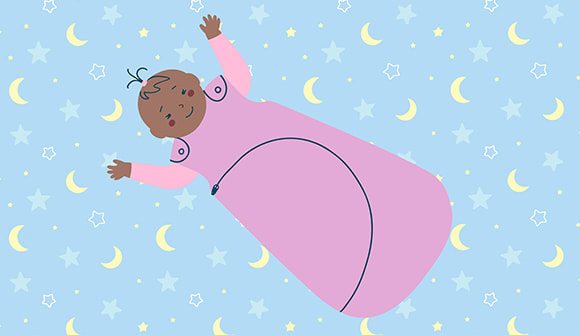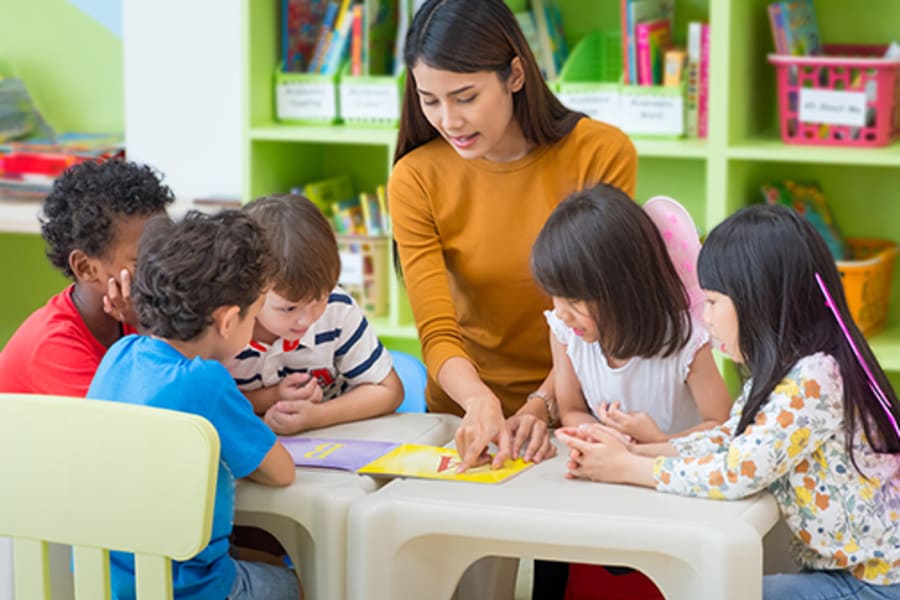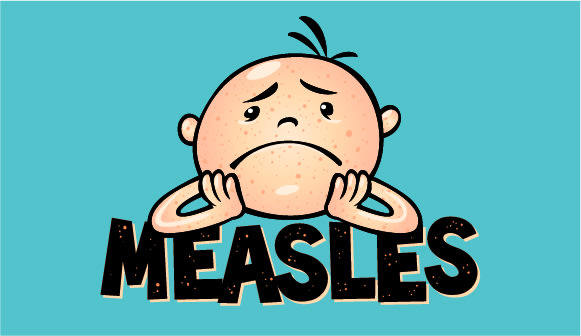Hitting the sack
Safe sleep for babies and the importance of sleep sacks.
Article Author: Tina Smithers Peckham
Article Date:

All parents want their precious little ones to sleep safe and sound — but as new studies are done and research evolves, the guidelines surrounding safe sleep for infants can be confusing for caregivers. Which products are approved and which ones have been recalled? Which sleep items could pose a threat of suffocation or increase your baby’s risk of sudden infant death syndrome (SIDS)? The information can be overwhelming, but by knowing what’s safe for your baby and what’s not, any potential risks can be significantly reduced.
The American Academy of Pediatrics recommends that babies sleep on their backs on a firm, flat mattress free of loose blankets, pillows, stuffed animals, bumpers and other soft items that can increase the risk of suffocation. Jessica Winberry, prevention coordinator for Safe Kids Northeast Florida and Wolfson Children’s Hospital, said sleep sacks can be a good alternative for parents seeking to keep their baby comfortable at bedtime and naptime.
“Sleep sacks can be used with one additional thin layer of clothing,” she said. “This allows parents to keep their baby warm without the risk of blankets.”
Swaddling vs. sleep sacks
Often used with newborns, swaddling is one way to keep your baby feeling secure and safe, mimicking the tight, cozy feeling they experienced in their mother’s womb. It consists of a lightweight swaddle blanket wrapped securely around your baby’s body, arms, and legs. (Cue all the adorable baby burritos!) Because their limbs are wrapped, it can help prevent the newborn startle reflex, which can lead to those much-needed longer stretches of sleep for both baby and parents. Unlike a swaddle, a sleep sack is looser fitting and is similar to a wearable blanket or mini sleeping bag with arm holes.
“A sleep sack or a swaddle sleep sack is more a clothing item. Some sleep sacks have a ‘swaddle’ component, and some do not,” Winberry noted. “It is important to always follow the manufacturer’s recommendations on how it should be used to keep your baby safe. Once a baby shows signs of rolling, the swaddle should no longer be used.”
A baby typically starts to roll over at around four months, though the timing of this milestone can vary for every child. If a baby rolls onto his or her stomach while swaddled, it can place them in an unsafe sleep position.
Sleep sacks are often made of cotton, fleece or wool and feature zippers or snaps to make it easy for parents to take on and off. These wearable blankets are sleeveless, allowing baby’s arms to move freely while still keeping the child warm during chilly nights. Because sleep sacks aren’t loose blankets, Winberry said their use, in conjunction with other safe sleep factors, can help reduce the risk of suffocation for infants.
“There are many different types of sleep sacks available for caregivers to choose from. It is important to make sure you have the correct size for your baby,” Winberry said. “Each sleep sack has specific manufacturer’s recommendations describing weight, height and age that is appropriate for that item. Parents will want to use a sleep sack that fits the height, weight and age of their baby.”
Safe sleep tips
It is important to remember that babies sleep an average of 14 to 17 hours per day, and parents and caregivers must ensure that they create the safest possible sleep environment during that time. Winberry offers a few safe sleep tips for infants: “Babies should never share a sleep surface, whether that be an adult bed, couch or armchair. Avoid using wedges, Boppy® pillows and inclined sleepers for a sleeping baby.”
She also wants to remind parents the importance of reading owners’ manuals for any and all baby items, especially as related to sleep. “Many products may look like they could be used for a sleeping baby, but often, there are specific directions and cautions outlined for correct product use. There are many products available for parents and caregivers to buy for their babies, so make sure to research the intended use and ensure there have not been recalls.”
If you plan to purchase infant items secondhand, ensure that all parts are working properly and there are no rips, tears or broken pieces. To check for any recalls, visit the Consumer Product Safety Commission website.
For more infant safety tips and a safe sleep checklist, visit WolfsonChildrens.com/SafeSleep. To sign up for First Year Baby Safety Essentials, visit BaptistJax.com/Classes.
Source: American Academy of Pediatrics



